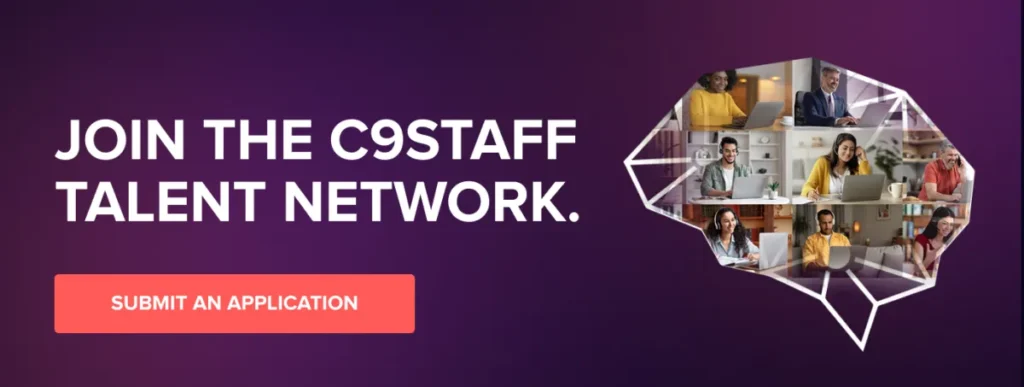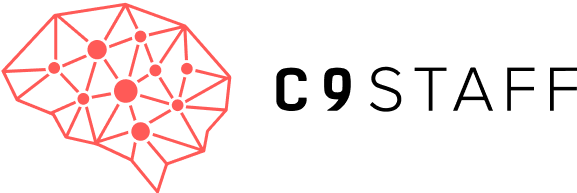Introduction

In today’s fast-paced digital landscape, the role of a Content Editor is more pivotal than ever to the success of modern organizations. Crafting an accurate and detailed job description for this position is not merely a formality; it is a strategic necessity that aligns team objectives with your company’s overarching goals and brand identity.
For employers focused on securing the most effective job description template available—ready to be tailored to meet your unique hiring needs—click the link below for direct access to our complimentary Content Editor Job Description. This template embodies the core principles and best practices of C9Staff’s renowned hiring methodology, offering you a robust foundation to attract and select top talent tailored to your organizational requirements.
Content Editor Job Description Template

As a Content Editor, you are at the heart of the content management and creation process. Your key responsibilities include overseeing the development, refinement, and coherence of content across various platforms. This role significantly impacts how effectively a brand communicates with its audience, ensuring that all content not only meets quality standards but also resonates with the intended demographic.
A well-tailored job description is crucial. It acts as a foundational tool for attracting the right talent—professionals who not only have the skills but also a clear understanding of their potential contributions and alignment with your company culture. By defining what you truly need from a Content Editor, you set the stage for mutual success.
Throughout this article, you will gain insights into when and why your organization might need a Content Editor, what responsibilities should be included in the job description, the essential skills required for the position, and how to craft a job description that stands out in the competitive job market. This guide will equip you with the knowledge to master the craft of creating a compelling job description, ensuring that you attract and retain top talent capable of propelling your organization to new heights.
Who Needs a Content Editor?

In today’s diverse media landscape, the role of a Content Editor is not just useful but indispensable in many scenarios. You might wonder what makes a Content Editor so vital to an organization. To understand this, let’s explore the varied roles these professionals play. From overseeing and managing content teams to significantly boosting the quality of the content produced, a Content Editor’s influence is vast. These roles can vary widely between mediums—whether it’s crafting engaging digital content that captivates online audiences or ensuring the consistency and accuracy of print media.
Understanding these distinctions is crucial because it helps you as an employer to identify the specific needs of your organization. Does your company engage in high-volume content production? Are you managing content across multiple platforms? Perhaps you’re in the midst of rebranding. In such cases, a Content Editor becomes a cornerstone, aligning your content production with broader strategic goals and maintaining coherence across your brand’s identity.
Let’s explore deeper into why a Content Editor is essential. In environments where content is prolific and varied, such as news agencies or content-driven companies, the need for meticulous editorial oversight grows. Similarly, for businesses expanding their digital footprint or those undergoing transformation, a Content Editor ensures that all public-facing content aligns with the new strategic direction, reinforcing the desired brand message and identity.
Key Responsibilities of a Content Editor: What Should Be Included in the Job Description

In the ever-evolving landscape of digital content, the role of a Content Editor is central to achieving the strategic goals of modern organizations. Here, you will understand the multifaceted responsibilities that should be detailed in a Content Editor’s job description, ensuring alignment with your company’s objectives.
Core Duties of a Content Editor
Overseeing Content Creation: Content Editors are pivotal in overseeing the creation of content across all platforms. They ensure that every piece aligns with your brand’s voice and editorial standards, maintaining a consistent and engaging narrative that resonates with your target audience.
Editing and Proofreading: Precision is key. Content Editors refine content to eliminate errors, enhance clarity, and ensure adherence to the highest editorial standards. This meticulous attention to detail ensures the production of high-quality content that upholds your organization’s reputation.
Developing Content Strategies: Beyond day-to-day content management, Content Editors play a strategic role in shaping long-term content strategies. They analyze market trends and audience feedback to devise content plans that drive engagement and meet business objectives.
Collaborative and Cross-Functional Responsibilities
Content Editors are not isolated in their roles; they collaborate extensively with marketing, design, and product teams. This collaboration ensures the creation of cohesive content that supports overarching company goals.
Working with Marketing: Content Editors coordinate closely with marketing teams to refine campaign messaging, ensuring that all content is optimized for audience engagement and conversion.
Partnering with Design Teams: In collaboration with design teams, Content Editors help ensure that visual and textual elements are perfectly aligned, enhancing the aesthetic appeal and readability of content.
The Strategic Importance of These Responsibilities
The integration of these responsibilities into a Content Editor’s job description is not just about fulfilling operational needs; it’s about empowering your organization to craft content that is both impactful and aligned with strategic business goals. As you consider these responsibilities for your own Content Editor job description, reflect on how they can elevate your content management efforts and enhance your organizational success.
By embedding these key responsibilities into the Content Editor role, you enable a strategic partnership that transcends basic content creation, positioning your organization to thrive in a competitive digital marketplace.
Essential Skills and Qualifications for a Successful Content Editor

As you seek to either fill a Content Editor role within your organization or step into this career path, understanding the crucial skills and qualifications is fundamental. These competencies align not just with the operational needs but also with the strategic goals of modern businesses.
Hard Skills Necessary for the Role
Advanced Editorial Skills: Mastery of language and a keen eye for detail are non-negotiable. Content Editors must be adept at crafting, revising, and optimizing content that engages and informs the audience while reflecting the organization’s voice.
SEO Knowledge: Understanding SEO principles is essential for ensuring that content is discoverable and ranks well on search engines. This skill is critical for managing content that meets both user needs and SEO standards, driving traffic and engagement.
CMS Proficiency: Familiarity with content management systems like WordPress or Drupal is crucial. This technical skill ensures that Content Editors can effectively manage and streamline the publication process.
Complementary Soft Skills
Attention to Detail: This skill is vital for maintaining the accuracy and consistency of content, which in turn supports the credibility and professionalism of the brand.
Creativity: A creative approach to content can differentiate your organization in a crowded market, driving engagement and fostering a unique brand voice.
Exceptional Communication Skills: Effective communication is key, not just for the creation of clear and persuasive content, but also for collaborating with team members across departments to ensure that all content aligns with business objectives.
Desired Qualifications
Educational Background: Degrees in journalism, communications, or a related field are typically preferred as they provide a solid foundation in writing and media production.
Certifications: Certifications in digital marketing, SEO, or content strategy can give candidates a competitive edge, equipping them with the latest skills and knowledge in a rapidly evolving field.
Aligning Skills with Business Goals
These skills and qualifications are not just a list of requirements—they are the building blocks of a strategic content management approach that aligns with your broader business goals. As you craft or refine a job description, or as you consider your career development, think about how these competencies enable you to meet and exceed the demands of the market and your specific industry.
Understanding and integrating these skills into your team’s capabilities or your own professional toolkit can significantly enhance the effectiveness of your organization’s content strategy. This alignment not only helps in achieving operational excellence but also drives strategic outcomes, ensuring that your content efforts contribute directly to business success.
Crafting a Competitive and Attractive Job Description: Tips for Employers

Crafting a job description that attracts and retains top talent in content editing is crucial for any organization looking to strengthen its content strategy. Here’s how you can make your job postings stand out in the competitive landscape of content management.
Start with Clarity, Conciseness, and Engagement
The foundation of an effective job description is its clarity and conciseness. Your job title and summary should immediately capture the essence of the role while being appealing to potential candidates. Use clear, jargon-free language to ensure that the role is understandable at a glance.
Best Practices for Outlining Responsibilities and Qualifications
Detailing responsibilities and qualifications require a structured approach:
Responsibilities: Clearly articulate what the Content Editor will be expected to do. Emphasize the dynamic aspects of the role, such as managing content across various platforms or adapting strategies based on analytics. This shows the evolving nature of the role and aligns with industry trends.
Qualifications: List essential skills and preferred qualifications, such as degrees in journalism or certifications in digital marketing. Be precise about what is required and what is desirable to avoid any confusion.
Highlighting Company Culture and Growth Opportunities
To make your company stand out, integrate elements in the job description that showcase your organization’s culture and the growth opportunities you offer. Mention team collaboration events, professional development programs, and any awards your company has received. These details not only attract candidates but also give them a glimpse of what it’s like to work with you.
Inclusive Language and Alignment with Industry Standards
Using inclusive language is not just about compliance—it’s about making a statement of your company values. Ensure that your job description welcomes a diverse range of candidates by avoiding biased or gender-coded language.
Aligning the job description with industry standards demonstrates that your company is up-to-date and proactive. Show that you are aware of current trends and future shifts in the content editing landscape. This could involve mentioning your approach to emerging technologies or new publishing platforms.
For employers focused on securing the most effective job description template available—ready to be tailored to meet your unique hiring needs—click the link below for direct access to our complimentary Content Editor Job Description. This template embodies the core principles and best practices of C9Staff’s renowned hiring methodology, offering you a robust foundation to attract and select top talent tailored to your organizational requirements.
Benchmarking Against Industry Standards: Ensuring Your Content Editor Job Description is Competitive

In the ever-evolving field of content creation, staying competitive means continuously aligning your job descriptions with the latest industry standards. Here’s how you can ensure your Content Editor job descriptions not only meet but exceed the current benchmarks.
Understanding Industry Trends
The landscape of content editing has seen significant shifts, driven by advances in technology and changes in digital consumption habits. Key trends include:
Digital Competencies: With the rise of digital media, Content Editors need skills in SEO, content analytics, and social media engagement strategies.
Content Analytics: There’s a growing emphasis on data-driven content strategies, requiring editors to interpret performance metrics and adjust strategies accordingly.
SEO Practices: As search algorithms evolve, so too must the SEO knowledge required of Content Editors, emphasizing a blend of technical and creative skills.
Comparing with Other Companies
To understand what makes a job description stand out, let’s examine how top companies are crafting theirs:
Job Title Clarity: Effective job descriptions feature clear, descriptive titles that immediately convey the role’s focus, such as “Senior Content Editor – Digital Media.”
Detailed Responsibilities: They specify what the editor will be responsible for, from overseeing content strategy to managing a team of writers.
Qualifications: Leading job descriptions list both required and preferred qualifications, clearly distinguishing between essential skills and those that can offer candidates a competitive edge.
Staying Competitive
To keep your job descriptions up-to-date and appealing, consider the following adjustments:
Incorporate Industry Keywords: Update your job descriptions with keywords that reflect the latest industry trends and competencies.
Highlight Unique Company Benefits: Emphasize benefits that differentiate your company from others, such as remote working options, continuous learning opportunities, and a strong company culture.
Define Role Expectations Clearly: Ensure that the responsibilities and expectations are articulated clearly to attract candidates who are a good fit for the role and your company’s needs.
The Candidate’s Perspective: Tailoring Your Application Based on Job Descriptions

Understanding and responding effectively to job descriptions is a crucial skill that can significantly enhance your chances of landing your desired role. This section is dedicated to empowering you, the candidate, with strategies to interpret and utilize job descriptions effectively.
Analyzing Job Descriptions
Start by thoroughly analyzing the job description to identify the key focus areas. Pay close attention to what employers are emphasizing in terms of skills, experiences, and the cultural fit they seek. This will help you understand the employer’s priorities and how they align with your own professional qualifications and work style.
Tailoring Your Resume and Cover Letter
To tailor your resume and cover letter:
Identify Keywords: Scan the job description for specific keywords and phrases related to skills, tools, and experiences. Incorporate these into your resume and cover letter to make it clear that your qualifications match the job requirements.
Highlight Relevant Experiences: Emphasize your past job responsibilities and achievements that directly align with the listed requirements of the job. This demonstrates your capability and readiness to tackle similar challenges in the new role.
Preparing for Interviews
Use the job description as your guide to prepare for the interview:
Anticipate Questions: Based on the responsibilities and qualifications outlined, anticipate the questions you might be asked and prepare coherent and concise responses.
Prepare Inquiries: Formulate questions that show your understanding of the role and the company’s goals. This not only shows your interest in the position but also your proactive nature.
Standing Out to Employers
To stand out during the application process:
Personal Branding: Develop a strong personal brand that reflects your professional skills and personal values. This includes having a professional online presence on platforms like LinkedIn.
Communicate Your Unique Value: Clearly articulate what makes you a unique asset to the team. This could be a particular combination of skills, past experiences, or your approach to solving problems.
If you’re ready to supercharge your career and land your dream job, C9Staff is here to help. We invite you to click the link below and submit your resume to our talent acquisition department. If your qualifications align with our client requirements, we’ll reach out to discuss potential opportunities that match your skills and aspirations. Don’t miss the chance to elevate your career with us!

Content Editor Mastery: Effortlessly Craft Incredible Content!
Future Trends in Content Editing: Navigating the Evolving Landscape

As the content editing field rapidly evolves, staying informed about future trends is crucial for both aspiring and current content editors. Understanding these changes will help you adapt and remain competitive in your career.
The Impact of AI and Automation
Artificial intelligence and automation are reshaping content editing roles significantly. These technologies are not only streamlining routine tasks such as basic proofreading and content formatting but are also opening doors to more strategic and creative opportunities. As routine tasks become automated, your role as a content editor will likely shift towards more complex content planning and creative storytelling. Embrace these changes by familiarizing yourself with AI tools that can enhance your productivity and creativity.
The Evolution of Content Platforms
The landscape of content platforms is diversifying. With the rise of digital consumption, there’s a growing demand for multimedia content—videos, podcasts, and interactive media are becoming staples alongside traditional text-based content. Future job descriptions for content editors may increasingly require competencies in managing these diverse content types. To stay relevant, consider developing skills in multimedia content creation and editing, which will likely be crucial in the near future.
The Rise of Data-Driven Content Strategies
Data-driven strategies are becoming essential in content editing. An understanding of analytics is crucial as it allows content editors to measure content performance and optimize strategies for better engagement. Future job descriptions will likely emphasize analytical skills, placing them on par with traditional editorial abilities. Enhancing your skills in data analysis and performance metrics can provide you with a significant advantage in adapting to this trend.
Preparing for Future Changes
As these trends continue to influence the content editing landscape, it’s important for you to consider how they might affect your career or your hiring strategies. Staying ahead of these trends can position you or your team for success in a field that values adaptability and forward-thinking.
Acquire New Skills: Continuously update your skill set to include AI literacy, multimedia content production, and data analytics.
Embrace Technology: Integrate new technologies into your work process to enhance efficiency and creativity.
Adapt to New Content Formats: Be open to learning and experimenting with various content formats beyond traditional text.
By anticipating these changes and preparing accordingly, you ensure that your skills and strategies remain robust and relevant. Whether you are crafting job descriptions or looking to fill a content editing role, understanding these trends will help you navigate the future confidently.
For employers eager to discover how C9Staff can enhance your recruitment process for a Content Editor, we invite you to schedule a free exploratory call with one of our account managers today. During this call, we will attentively listen to your specific needs and recommend potential candidates at no cost, allowing you to evaluate the best talent available at competitive prices. Click the link below to find the perfect fit for your organization with the help of our expert team.

Conclusion: The Strategic Value of a Well-Written Content Editor Job Description

As we have explored throughout this article, crafting a well-aligned Content Editor job description is not just a routine task—it’s a strategic endeavor that significantly contributes to organizational success and brand identity. A well-crafted job description serves as a cornerstone for attracting the right talent and ensuring that the entire content team is aligned with company goals.
A Content Editor’s role is crucial in shaping how a company communicates with its audience, maintaining engagement, and navigating the company’s narrative through various challenges and changes. The alignment of job descriptions with company goals not only optimizes recruitment efforts but also fortifies the organization’s brand identity and strategic objectives.
Throughout this guide, we’ve seen how the requirements for Content Editors are evolving. The integration of hard skills like SEO knowledge and CMS proficiency with soft skills such as creativity and communication is becoming more critical. Additionally, the role is expanding to include competencies in managing diverse and multimedia content, alongside a growing necessity to adopt data-driven content strategies.
Now, let’s turn these insights into action. If you are an employer, take this moment to revisit and refine your job descriptions. Incorporate the elements discussed to ensure your descriptions are not only competitive but also comprehensive and reflective of the evolving landscape in content editing. This will greatly enhance your ability to attract and retain top talent.
For candidates, use this information to tailor your applications. Highlight your skills and experiences that match the evolving demands of the Content Editor role. Show prospective employers how you can contribute to their strategic goals and adapt to the changing content environment.
By staying informed and proactive, whether you’re crafting job descriptions or responding to them, you ensure that you are well-prepared to meet the demands of the modern job market. Embrace these insights, and take definitive steps toward aligning your professional practices with the current and future trends in content editing.




